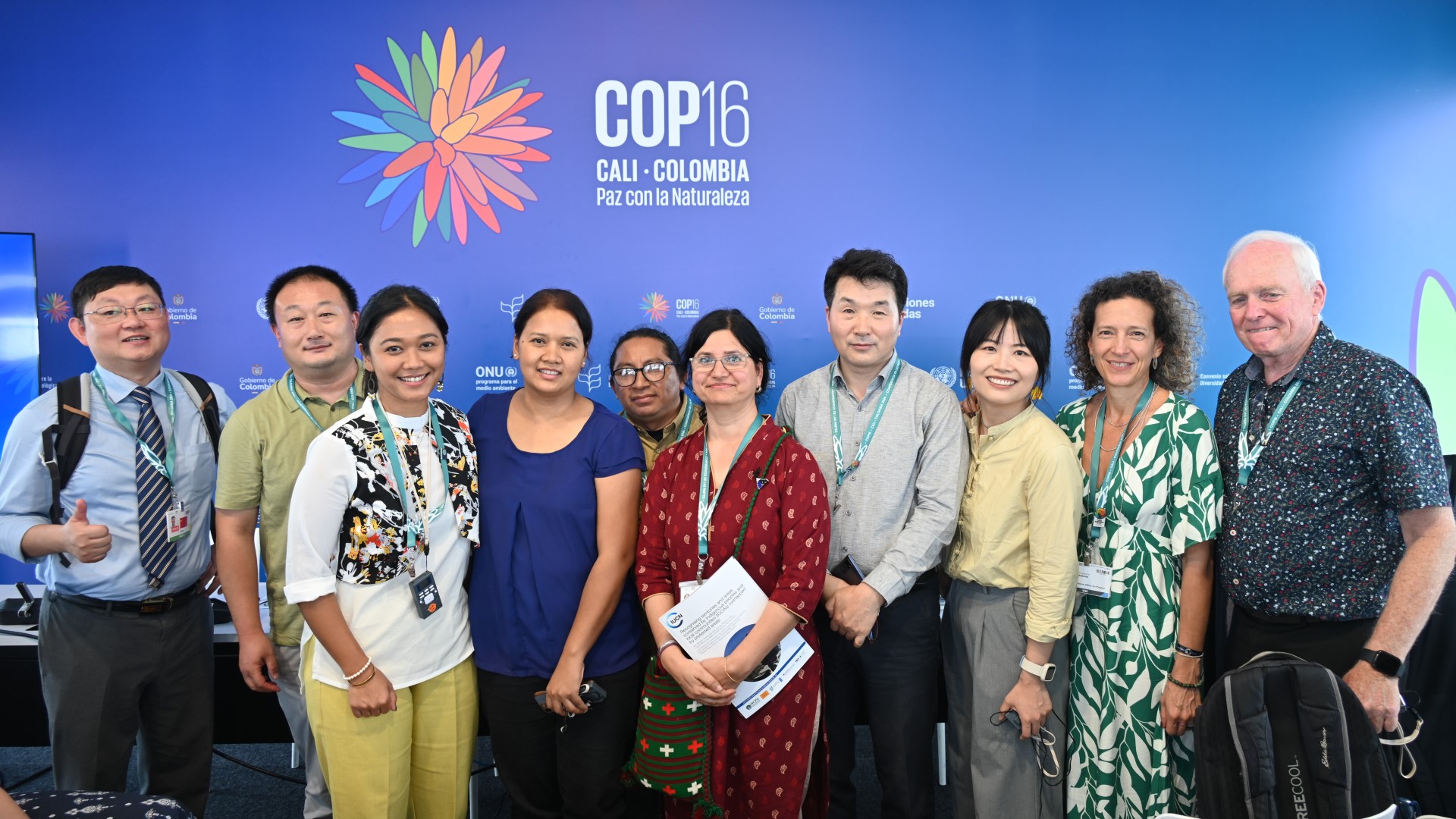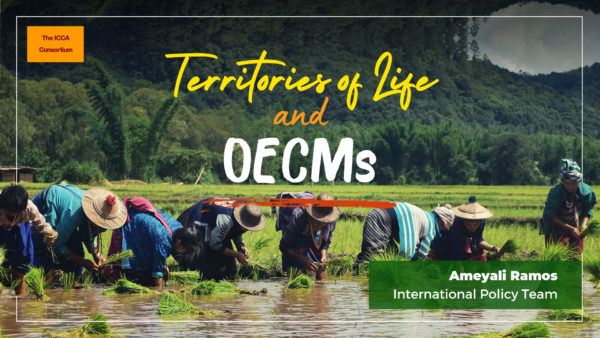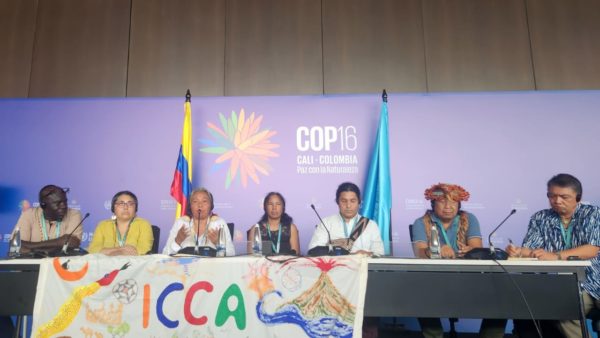Event Recap: At this CBD COP16 Side Event on October 25, 2024, speakers shared assessments and case studies and took part in policy dialogues on Other Effective Area-based Conservation Measures (OECMs)
First published on 12/13/2024, and last updated on 02/27/2025
By Wei Chunyue, Shan Shui Conservation Center, ICCA Consortium Member
The 16th meeting of the Conference of the Parties to the Convention on Biological Diversity (CBD COP16) was held in Cali, Colombia. The conference, themed “Peace with Nature,” called for exploring more nature-friendly and sustainable development models. Among the key focuses of the conference was the progress in implementing the Global Biodiversity Framework, particularly its target 3, which aims to effectively conserve at least 30% of terrestrial and 30% of marine areas by 2030—also known as the 30×30 target.
Currently, global protected areas cover only 16.42% of land and inland waters and 8.33% of coastal and marine areas. Achieving the 30×30 target through protected areas alone will be challenging.
Other Effective Area-based Conservation Measures (OECMs) are widely recognized as innovative conservation tools that can significantly increase the area of effective conservation and help achieve the 30×30 target, making them one of the key discussion points at the conference.
On October 25, several European, Chinese, and international organizations jointly held a side event at COP16 titled “Exploring Voluntary Commitments by Non-state Actors in Advancing Other Effective Area-based Conservation Measures (OECMs): Insights from China and International Perspectives.” Through the assessment of status, case study sharing, and policy dialogues, the side event explored how non-state actors can participate in and support OECMs to contribute to the 30×30 target.
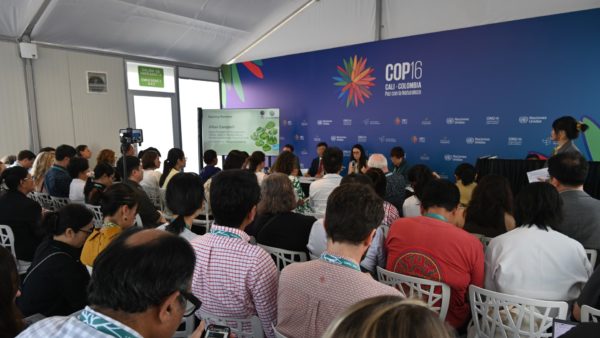
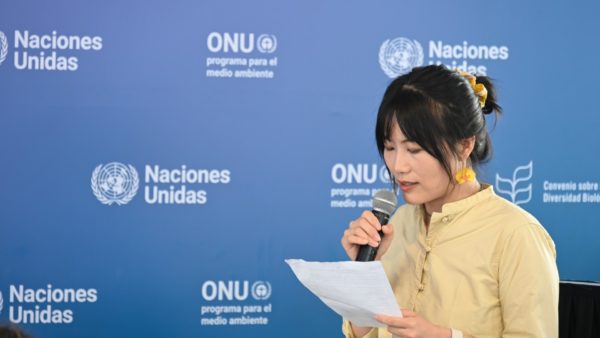
The Shan Shui Conservation Center, IUCN, IUCN WCPA, ICCA Consortium, ICCA-GSI, UNDP-GEF SGP, ICIMOD, Chinese Research Academy of Environmental Sciences, Tsinghua University National Parks Research Institute, Peking University Center for Nature and Society, Tencent Foundation, Huatai Foundation, Huatai Securities, SEE Foundation, Global Environment Institute, and Chinese Academy of Forestry co-hosted the side event. This side event is part of the OECM Policy Dialogue Project, supported by the China Biodiversity Fund (CBF), funded by the European Union, and implemented by AFD. Representatives from government departments, academic institutions, social organizations, and local communities from various countries attended the side event and delivered speeches.
In the opening remarks, Jillian Campbell, Head of Monitoring, Review and Reporting of the Convention on Biological Diversity (CBD) Secretariat, emphasized the crucial role of OECMs in achieving the 30×30 target for biodiversity conservation. She expressed anticipation for future implementations of OECMs, focusing on various aspects, including management effectiveness, equitable governance, and enhancing connectivity of the protected and conserved area network.
Liu Ning, Deputy Director of the Department of Nature and Ecology Conservation, Ministry of Ecology and Environment of China, stated that China’s National Biodiversity Strategies and Action Plan (NBSAP) explicitly mentions the innovation of OECMs, exploration of various governance models and support for multiple forms of in situ conservation by civil society, expressing great expectations for the contributions of non-state actors.
James Hardcastle, Head of the IUCN Protected and Conserved Areas Team, indicated that OECMs, as a new type of conservation tool, provide more room for recognizing the conservation contributions from all sectors of society. He looked forward to actively mobilizing the participation of more non-state actors.
Huatai Securities and Shan Shui Foundation announced the joint launch of China’s first OECMs special fund at the meeting. The fund aims to provide practical and long-term funding and capacity support for China’s potential OECMs and encourage and mobilize more social entities to engage in biodiversity conservation. The Shanghai Stock Exchange Public Welfare Foundation also supported the special fund.
After the opening remarks, Stephen Woodley, Co-chair of the IUCN WCPA OECMs Specialist Group, and Lu Zhi, Professor at Peking University and founder of Shan Shui Conservation Center, delivered keynote speeches.
Dr. Woodley reviewed the historical development of the OECM concept; explained the concept, criteria, types of protection, and governance mechanisms of OECMs; and shared OECM cases from Indonesia, Kenya, and other places. He also discussed IUCN’s efforts to promote OECM policy dialogues in Africa and introduced the guidelines, technical notes, and related support materials on OECMs published by IUCN WCPA.
Prof. Lu focused on the gaps, cases, and potential pathways of OECMs in China. She pointed out that China’s existing protected areas (including national parks, nature reserves, and nature parks) still have insufficient representation in the conservation of ecosystems and species, and OECMs, with their flexible and diverse governance, are expected to play an active role in filling this gap and providing new opportunities for recognizing the contributions of Indigenous Peoples and Local Communities in conservation work.
Prof. Lu analyzed the policy gaps and opportunities for OECMs in China and introduced the actions related to OECMs carried out by Chinese civil society and the preliminary OECM standards drafted by the China OECM expert group.
She shared results from an initiative that assessed and evaluated potential OECMs in China. The initiative was the first attempt to collect potential OECM cases in China, collecting 90 cases. After the initial screening, permission, and detailed assessment, combined with literature review and field visits, 46 potential OECM cases were identified, including 12 highly promising cases. Prof. Lu also discussed possible pathways for OECMs in China, including key steps such as enhancing awareness, enabling criteria setting, monitoring, and reporting.
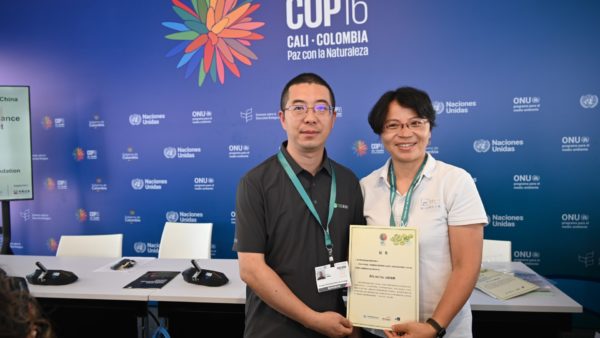
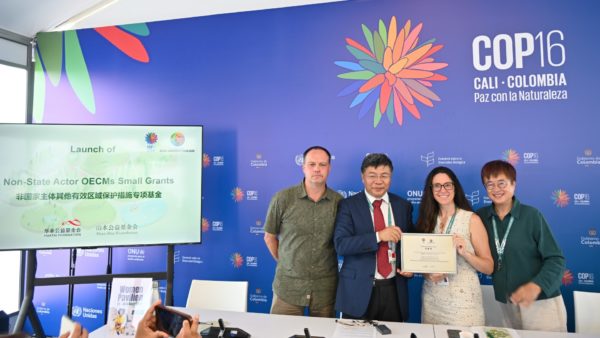
After the keynotes, representatives of four potential OECM cases in China accepted certificates for potential OECMs. The certificates recognize and encourage their achievements in the practice of OECMs.
Representatives of OECM case studies from Colombia, the Himalayan region, and China shared their experiences and stories of on-the-ground conservation practices.
Ana Beatriz Barona, National Coordinator of the GEF-UNDP Small Grants Programme in Colombia, discussed the development trajectory of the concepts of ICCAs—territories of life and OECMs in Colombia, as well as the differences and connections between the two, based on cases from three communities in Colombia.
Zhang Yingyi, Secretary-General of the Zhilan Foundation, shared the practices and experiences of China’s ICCAs. Using the case of the Liguang Community Conserved Area, her presentation illustrated that there is no ideal or perfect community conserved area, and even those with broad community support always face challenges. She used the case of the sacred mountain to demonstrate the importance of maintaining and documenting community-conserved areas and the case of the Qunan Protection Area to explain how to promote inclusive, collective community governance. Finally, she believes that whether community-conserved areas become OECMs or Protected Areas, they can all contribute in their own way.
Sunita Chaudhary, ICIMOD’s Biodiversity Lead, shared a case from India’s Nagaland in the Himalayan region, where many community-conserved areas exist. However, promoting OECMs still faces challenges, such as limited awareness of OECMs or some community-conserved areas already being included in the protected area system. She mentioned that the state still has an opportunity to develop OECM guidelines. She proposed several potential types of OECMs, including many unregistered private forests within the state, unique agricultural systems (Zabo Farming), and bodies of water.
Li Guanqi, Director of the Eastern Office of the Farmers’ Seed Network in China, shared a potential OECM case from Stone Village in Yunnan illustrating how traditional agriculture and other sustainable use methods can protect biodiversity and contribute to the 30×30 target through OECMs. In the village, farmers are preserving the genetic diversity of old crop varieties and protecting the biodiversity of local farmland and surrounding forests by reducing pesticide use. The farmers also survey and document local wild plants and wildlife.
In the final roundtable discussion session, moderated by Peng Kui, Program Manager for Ecosystem Conservation and Community Development, Global Environment Institute, experts from various countries discussed the global experiences and challenges of OECMs in helping to achieve the 30×30 target.
Speakers included Stephen Woodley, Co-chair of the IUCN WCPA OECMs Specialist Group; Li Xi, Project Officer of the Department of Protected Area Management, National Forestry and Grassland Administration of China; Neema Pathak-Broome, Regional Coordinator for South Asia, ICCA Consortium; Hag Young Heo, Senior Research Fellow at the Korea National Park Service; and Albert Maurilio Chan Dzul, Regional Coordinator for Mesoamerica, ICCA Consortium.
They shared and exchanged experiences, lessons, and challenges in implementing OECMs, including formulating localized OECM standards, promoting the establishment of OECM-related mechanisms and policy formulation, promoting the participation of various non-state actors, and recognizing the contributions of Indigenous Peoples and Local Communities.
